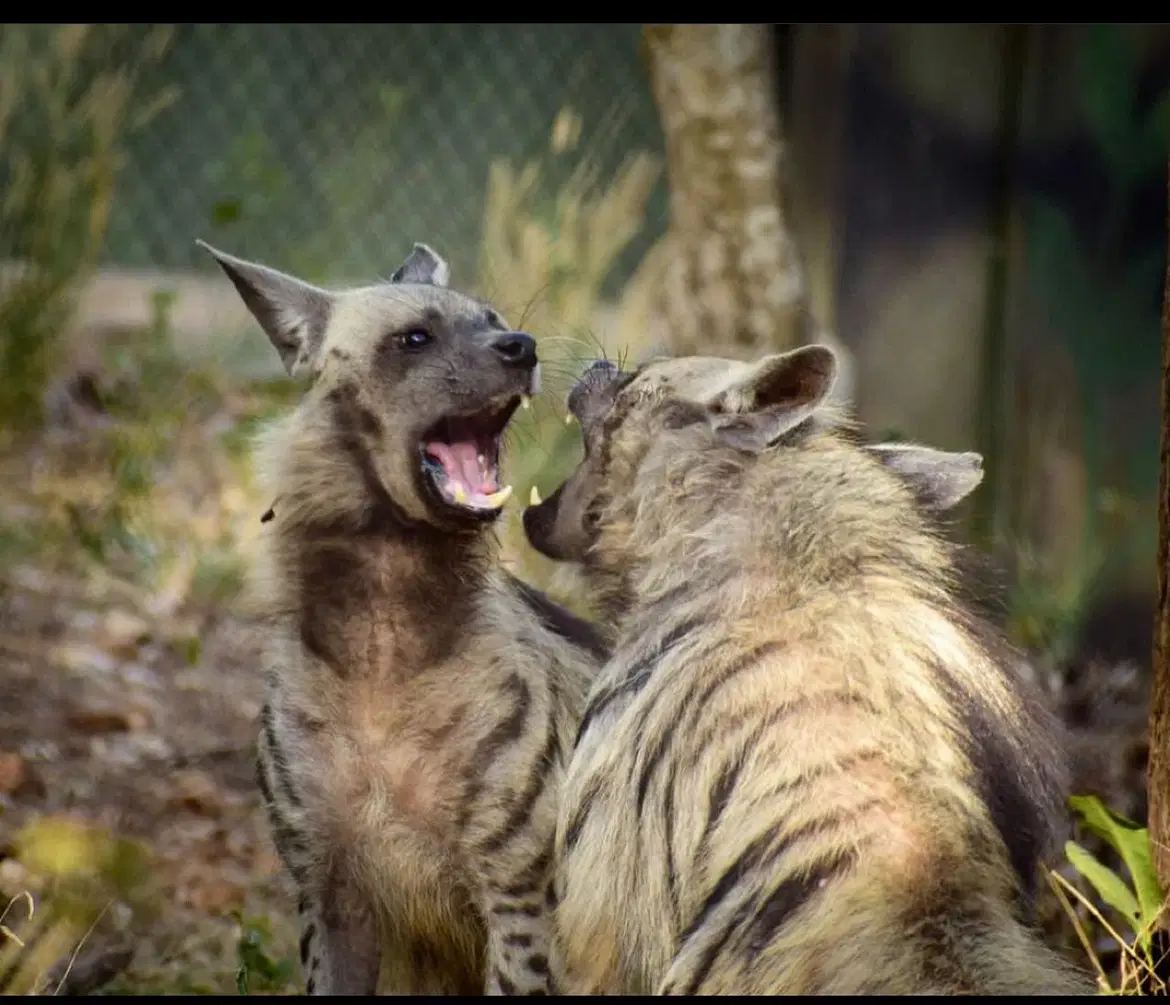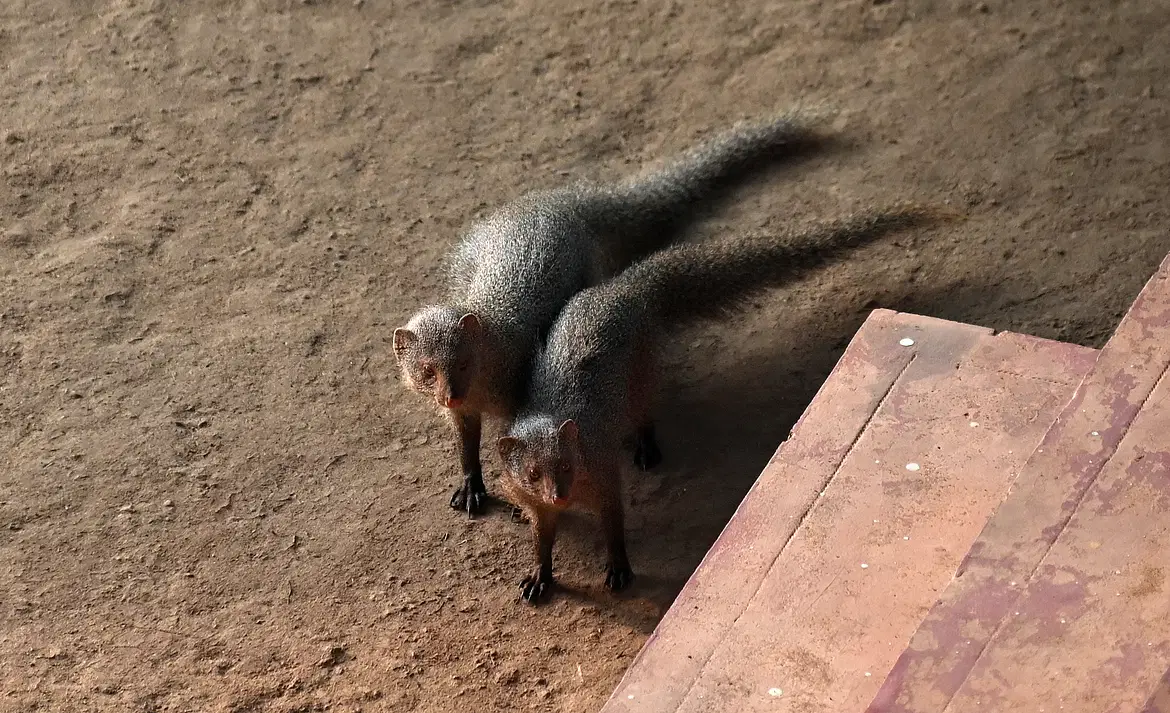Hubballi: In January this year, camera traps in Karnataka’s Bankapur Wolf Sanctuary captured a heartwarming yet concerning sight — eight wolf pups emerging from a den. The sighting confirmed the success of conservation efforts in the sanctuary, but also raised concerns about future challenges. With the growing wolf population, sanctuary officials are now worried about increasing human-wildlife conflict, given the limited food and water resources available within the sanctuary.
A Success Story with Challenges
The Bankapur Wolf Sanctuary, the first of its kind in Karnataka, was declared a wildlife sanctuary in 2021. Initially, the sanctuary housed just eight critically endangered wolves. Today, thanks to continued conservation efforts, the sanctuary boasts over 20 adult wolves. However, this growth comes with its own set of challenges. The sanctuary’s 822.03 acres of forest land, while a vital habitat for these wolves, also supports numerous lesser-known species, including foxes, hyenas, sloth bears, jungle cats, jackals, and porcupines.
Sanctuary officials are concerned that the increased wolf population may lead to food shortages and heightened human-animal conflict. Local human settlements near the sanctuary might face more frequent encounters with wildlife due to limited prey and water sources within the sanctuary’s boundaries. Moreover, the sanctuary struggles with a lack of funding and human resources to manage the growing wildlife population effectively.
The Role of Grasslands in Karnataka’s Biodiversity
Grasslands, such as those found in Bankapur, play a critical role in preserving Karnataka’s biodiversity. These grasslands shelter a wide variety of species, many of which are lesser-known and less-conserved than India’s megafauna like tigers, elephants, and lions. Species such as wolves, foxes, jackals, and jungle cats serve as apex predators, controlling herbivore populations in the ecosystem, while scavengers like hyenas and vultures help prevent disease by consuming carcasses left by predators.
Despite the vital role these species play in maintaining ecological balance, Karnataka’s grasslands remain under-recognised and underfunded. Conservation efforts for lesser-known species often take a backseat to more high-profile projects focused on megafauna. Grasslands form two-thirds of Karnataka’s landmass, but the government and forest department have been slow to acknowledge their importance. As a result, scientific studies and government grants focused on grassland conservation are sparse, making it difficult to implement effective policies for preserving these ecosystems.
The Need for an Ecosystem Approach
Conservationists argue that the current focus on individual species is inadequate for ensuring long-term ecological balance. Abi Vanak, a researcher from the Ashoka Trust for Research in Ecology and the Environment, suggests shifting the focus from an “umbrella species” approach — where conservation efforts are centred on one high-profile species — to an “umbrella habitat” approach. This would involve conserving entire ecosystems, which support a diverse range of species, from apex predators to pollinators like bats and hornbills.
Historically, India’s conservation successes, such as Project Tiger, have been supported by scientific studies and substantial funding from both the Indian government and international agencies. However, conservation projects for lesser-known species like wolves, vultures, and the Great Indian Bustard (GIB) have struggled due to a lack of resources and attention. In Ranebennur, the once-thriving population of GIB has now become extinct due to habitat degradation, while blackbucks, another key species in the area, have moved outside protected reserves as human activities encroach on their habitat.
Conservation Beyond Tigers and Elephants
Karnataka currently has five national parks and 36 wildlife sanctuaries, including five tiger reserves. While conservation efforts for tigers and elephants have shown success, lesser-known species continue to be neglected. For example, the Daroji Sloth Bear Sanctuary and the hornbill sanctuary in Dandeli have struggled to achieve significant conservation milestones. Limited resources, both in terms of funding and human expertise, further complicate conservation efforts for lesser-known species.
Indrajit Ghorpade, founder of the Deccan Conservation Foundation, notes that the forest department’s priorities often depend on the tourism value of certain species. While species like tigers and elephants generate significant tourist interest, wolves, hyenas, and other smaller carnivores do not receive the same attention, leading to a lack of funding for their conservation.
Wildlife activist Santosh Martin echoes this sentiment, highlighting that the promotion of tourism around tigers and elephants has played a significant role in the success of conservation projects. However, without similar public interest, lesser-known species remain neglected in terms of both funding and conservation efforts.
Addressing the Challenges of Grassland Conservation
Karnataka has taken some steps toward protecting grassland species by gazetting certain habitats as sanctuaries. For instance, the Bukkapatna Sanctuary was established for chinkaras, and the Dandeli Conservation Reserve was created to protect hornbills. However, Sanjay Gubbi, a conservation biologist, emphasises that the management of these areas is crucial. A one-size-fits-all approach to conservation does not work, as demonstrated by the mistakes made in Ranebennur and Maidenahalli, where inappropriate interventions led to the decline of native species.
Gubbi and other experts recommend several steps to improve conservation efforts in Karnataka:
- Identifying key species that require focused conservation efforts, particularly those threatened by habitat loss.
- Developing species-specific management plans that address the unique needs of different animals and ecosystems.
- Combating illegal wildlife trade, particularly for species like mongoose and star tortoises.
- Addressing the threat posed by invasive species, which can disrupt local ecosystems.
- Conducting scientific studies on lesser-known species to fill gaps in data and inform policy decisions.
The Way Forward
The challenges facing Karnataka’s grassland ecosystems and lesser-known species are significant, but not insurmountable. Researchers, conservationists, and government officials alike agree that a shift in focus is needed. By adopting an ecosystem-based approach to conservation, rather than one focused on individual species, Karnataka can ensure the long-term survival of its diverse wildlife. Additional resources, including increased funding and scientific research, will be critical in addressing the current gaps in conservation efforts and securing the future of species like wolves, vultures, and blackbucks.


